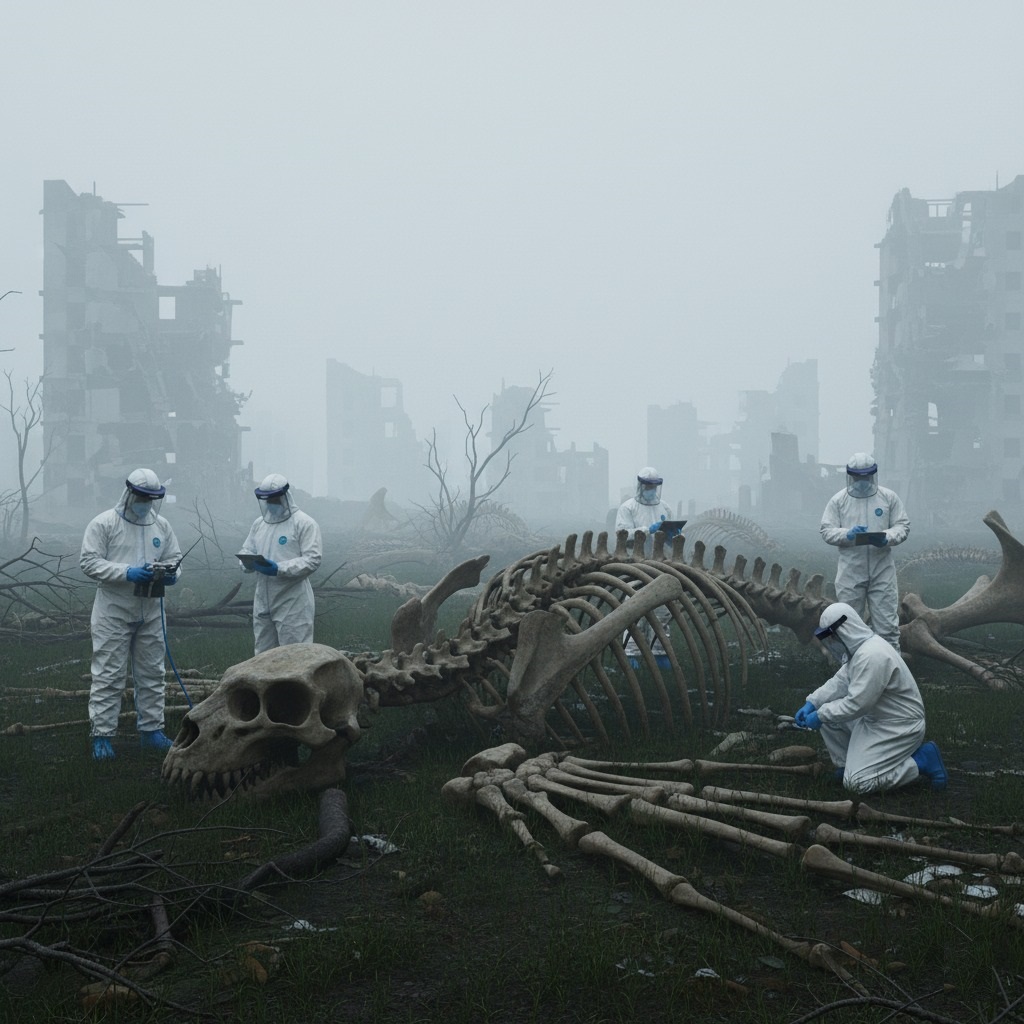“Unearthing the Giants of Pripyat: Post-Apocalyptic Paleontology”

The year is 2242. For generations, the Exclusion Zone around Chernobyl, once a symbol of humanity’s destructive reach, had become a graveyard of both human ambition and unknown life. Within its silent, overgrown perimeters lay Pripyat, not merely a ghost city, but now an archaeological marvel.
Dr. Aris Thorne, head of the Neo-Paleontology Division, wiped condensation from his visor. “Readings are still off the charts, Team. Nothing in the pre-Collapse databases matches this bone density.” Around him, his four-person team, clad in stark white environmental suits against the perpetual mist, moved with practiced precision. The air, despite centuries, still held a faint, metallic tang, a whisper of the disaster that had reshaped this land.
Their current site was a former residential block, its skeletal remains of concrete and rebar reaching skyward like petrified trees. But it wasn’t the human ruins that captivated them; it was the titanic skeleton sprawling across what was once a children’s playground. Its ribcage alone was the size of a small house, and the massive, articulated wing-like structures suggested an aerial predator of unprecedented scale.
“This creature, whatever it was,” mused Dr. Lena Petrova, meticulously scanning a vertebra, “must have been an apex predator of the ‘Green Zone’ — the mutated ecosystem that flourished here immediately after the initial meltdown.” Theories abounded of rapid evolution, fueled by radiation, creating monstrous lifeforms that lived and died within the confines of the Zone, hidden from the outside world.
Further investigation of the skull, buried partially in the churned earth, revealed intricate cranial structures unlike anything known. Dr. Kaelen Reed, their xenobiologist, hypothesized, “It’s almost as if its sensory organs were designed to navigate extreme atmospheric conditions, or perhaps even perceive forms of energy we can’t comprehend.”
Days turned into weeks. The team meticulously mapped every bone, cataloged every cellular trace, piecing together the life and death of this ‘Pripyat Wyrm,’ as the media had dubbed it. They discovered ancient impact fractures, suggesting battles with other colossal beasts, and signs of rapid growth, testament to the abundance of biomass in the newly formed ecosystem.
As the sun, a faint disk in the perpetual haze, began to set, casting long, ethereal shadows across the ruins, Dr. Thorne looked out at the silent city. Pripyat, once a testament to a future that never was, was now yielding secrets of a past that shouldn’t have been. The giants they unearthed here were not from pre-history, but from a terrifying, unexpected future, born of humanity’s hubris, and a stark reminder that even in ruin, life found a way to evolve, sometimes into something magnificent and terrifyingly new. The Exclusion Zone continued to hold its secrets, but with each discovery, humanity learned a little more about the resilience, and the potential horror, of a world reshaped.
